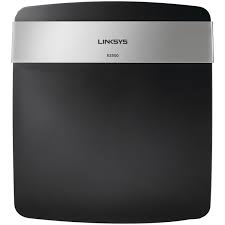Cisco E2500 is a high-performance wireless router designed to provide a secure and reliable connection for home and small office networks. It supports up to 300 Mbps of data transfer rate, making it an ideal choice for streaming media, online gaming, and other high-bandwidth activities. The router also offers advanced security features such as WPA2 encryption, SPI firewall protection, and guest access control.
The Cisco E2500 is easy to install and manage. It features a web-based setup wizard that walks you through the entire setup process in minutes. Once installed, you can configure the router’s settings such as network name (SSID), password, IP address, DHCP server settings, and more. The router also supports IPv6 protocol for enhanced security.
The Cisco E2500 is equipped with four Gigabit Ethernet ports that allow you to connect multiple wired devices to your network. It also comes with two USB ports that can be used for sharing printers or storage devices across your network. The router also supports simultaneous dual-band operation so you can enjoy both 2.4 GHz and 5 GHz wireless connections at the same time.
In addition to its advanced features, the Cisco E2500 also offers great range coverage due to its three external antennas. This ensures that your wireless signal reaches all corners of your home or office without any dead spots or interference from other devices in the area. With its robust performance and long range coverage, the Cisco E2500 is an excellent choice for those looking for a reliable wireless router for their home or small office network.
These are the top 5 questions concerning Cisco E2500.
- How do I set up my Cisco E2500 router?
- What is the default password for my Cisco E2500 router?
- What are the features of a Cisco E2500 router?
- How do I reset my Cisco E2500 router to factory settings?
- Can I use a USB modem with my Cisco E2500 router?
How do I set up my Cisco E2500 router?
- Connect the router to your modem using an Ethernet cable.
- Connect the router to your computer using an Ethernet cable.
- Open a web browser and type in the IP address for your router (usually 192.168.1.1).
- Enter your username and password to access the router’s configuration page (the default username and password are usually “admin”).
- Configure the settings as desired, such as setting up a wireless network, configuring port forwarding, or setting up a guest network.
- Save the settings and reboot the router to apply the changes.
What is the default password for my Cisco E2500 router?
The default password for a Cisco E2500 router is “admin”.
What are the features of a Cisco E2500 router?
- Dual-band Wireless-N router with speeds up to 300 Mbps
- 4 Gigabit Ethernet ports for wired connections
- USB port for external storage and printer sharing
- Advanced security features such as WPA/WPA2 encryption and SPI firewall protection
- Quality of Service (QoS) to prioritize traffic for smooth streaming and gaming
- Easy setup with Cisco Connect software
- Parental controls to manage online access by family members
How do I reset my Cisco E2500 router to factory settings?
To reset your Cisco E2500 router to factory settings, press and hold the Reset button for 10 seconds. You may need to use a paperclip or other pointed object to press the Reset button. After 10 seconds, the router will reset and all settings will be restored to their factory defaults.
Can I use a USB modem with my Cisco E2500 router?
Yes, you can use a USB modem with your Cisco E2500 router. However, the USB modem must be compatible with the router and must be configured correctly for it to work properly.
Tags: 2.4 ghz and 5 ghz wireless connections, cisco e2500, data transfer rate, dhcp server settings, four gigabit ethernet ports, guest access control, high-performance, ip address, ipv6 protocol support, network name ssid, online gaming, password, range coverage, reliable connection, robust performance, router, secure, simultaneous dual-band operation, spi firewall protection, streaming media, three external antennas, two usb ports, web-based setup wizard, wireless, wpa2 encryption
